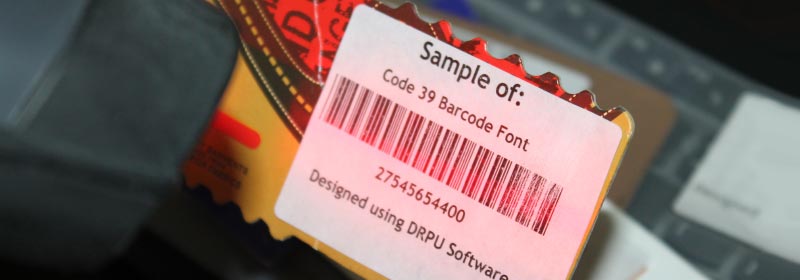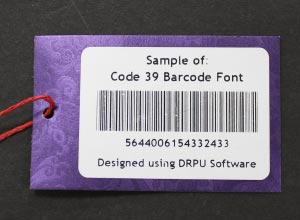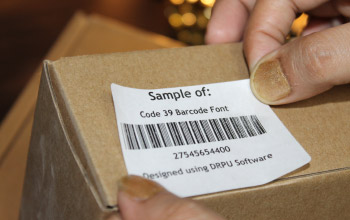Code 39 Barcode: Types, Advantages, Limitations
| Last Updated On:
Code 39 is a popular barcode symbology that can encode alphanumeric characters, including uppercase letters, numbers, and several special characters. The structure of Code 39 barcode includes a start character, a stop character, and a variable-length data encoded using a series of bars and spaces. Generating a Code 39 barcode can be done using a variety of methods, including online barcode generators, barcode software, and programming languages.
Introduction
Advantages Of Using Code 39 Barcode
Here are some of the advantages of using Code 39 barcode:
- 1.High Reliability: Code 39 barcode is one of the most reliable barcode formats in use today. It has a high level of error correction capability, which means that even if a part of the barcode is damaged or obscured, the barcode scanner can still read the code and decode it correctly.
- 2.High Data Density: Code 39 barcode has a high data density, which means that it can encode a lot of data in a small amount of space. This makes it ideal for applications where space is limited, such as on small products or in small labels.
- 3. Easy to Generate: Code 39 barcode is easy to generate, and there are many software programs and online tools available that can generate Code 39 barcodes quickly and easily. This makes it a popular choice for small businesses and individuals who need to create their own barcodes.
- 4. Easy to Print: Code 39 barcode is easy to print on a variety of materials, including paper, plastic, and metal. This makes it a versatile choice for a wide range of applications, including product labeling, inventory management, and asset tracking.
- 5.Widely Accepted: Code 39 barcode is widely accepted and recognized by many organizations and industries, including retail, manufacturing, healthcare, and logistics. This means that it can be used in a variety of applications and is compatible with many different barcode scanners and software systems.
- 6.Cost-Effective: Code 39 barcode is a cost-effective solution for many applications, as it requires minimal hardware and software investment. This makes it a popular choice for small businesses and organizations with limited budgets.
- 7.Versatile: Code 39 barcode can encode both letters and numbers, making it a versatile solution for a wide range of applications. It can be used for product identification, asset tracking, inventory management, and many other applications.
📝 Overall, Code 39 barcode is a reliable, versatile, and cost-effective solution for many applications. It has a high level of error correction capability, a high data density, and is widely accepted and recognized by many organizations and industries. Additionally, it is easy to generate and print, making it a popular choice for small businesses and individuals who need to create their own barcodes.

Download and Install DRPU Barcode Software
Code 39 Barcode Different From Other Barcode Types
Code 39 can be easily read by most barcode scanners, including handheld and fixed-position scanners, making it ideal for applications that require fast and accurate data capture.
Code 39 and other barcode types is the set of characters that can be encoded. Code 39 can encode 43 characters, including the uppercase letters A to Z, the numbers 0 to 9, and a few special characters such as hyphen (-), period (.), space, dollar sign ($), slash (/), plus sign (+), and percent sign (%). In contrast, barcode types, such as Code 128, can encode a much larger range of characters, like punctuation marks, and non-ASCII characters.
Another notable difference between Code 39 and other barcode types is the way the barcode is encoded. Code 39 uses a pattern of wide and narrow bars to represent each character, with each character consisting of nine elements: five bars and four spaces. In contrast, other barcode types such as Code 128 and QR codes use more complex encoding schemes, such as variable-length encoding and error correction, to encode more information in a smaller space.
One of the primary differences between Code 39 also has some specific characteristics that make it suitable for certain applications. For example, Code 39 is a self-checking barcode, which means that it can be scanned and verified without the need for special equipment or software. This makes it a popular choice for applications where barcode verification is important, such as in the healthcare and pharmaceutical industries.
Types Of Devices Can Read Code 39 Barcode
It is a linear barcode that can be easily read by a variety of devices, including barcode scanners, mobile devices, and computers. In this article, we will explore the types of devices that can read Code 39 barcode and how they work.
-
Barcode Scanners
Barcode scanners are the most common type of device used to read Code 39 barcode. They are handheld devices that use a laser or camera to scan the barcode and convert the code into a digital signal. Barcode scanners can be either wired or wireless and can connect to a computer, tablet, or smartphone to transmit the scanned data. There are several types of barcode scanners that can read Code 39 barcode, including:
-
► Laser Scanners:
Laser scanners use a laser beam to read the barcode. They are accurate and can read barcodes from a distance.
-
► CCD Scanners:
CCD scanners use a camera to capture an image of the barcode. They are less expensive than laser scanners and can read barcodes from a shorter distance.
-
► 2D Imagers:
2D imagers use a camera to capture an image of the barcode and can also read 2D barcodes such as QR codes. They are more expensive than CCD scanners but can read a wider range of barcodes.
Barcode scanners are widely used in retail stores, warehouses, and shipping facilities. They can be used to scan products, track inventory, and manage orders.
-
Mobile Devices
Mobile devices such as smartphones and tablets can also read Code 39 barcode. There are several apps available for iOS and Android devices that can scan barcodes using the device's camera. These apps use the camera to capture an image of the barcode and convert it into a digital signal. The scanned data can be used to track inventory, manage orders, and perform other functions.
Mobile devices are a convenient and cost-effective way to read barcodes, especially for small businesses or individuals who do not need to scan large volumes of barcodes. However, the accuracy and speed of mobile devices may not be as high as dedicated barcode scanners.
-
Computers
Computers can also read Code 39 barcode using a barcode scanner or webcam. Barcode scanner software can be installed on a computer to allow it to read barcodes using a connected scanner. Alternatively, a webcam can be used to capture an image of the barcode, and software can be used to convert the image into a digital signal.
Computers are commonly used in industries such as healthcare, where barcodes are used to track patient information and medications. They can also be used in retail and shipping facilities to track inventory and orders.
Limitations Of Using Code 39 Barcode
Code 39 is a popular barcode type with several advantages, but it also has some limitations. Here are some of the limitations of using Code 39 barcode:
-
Limited data
capacity:
Code 39 can only encode a limited set of characters, including uppercas, numbers, and a few special characters. It cannot encode lowercase letters or Unicode characters, limiting the amount of data can be stored in a single barcode.
-
Requires wide
quiet zones:
Code 39 requires wide quiet zones, which are the blank areas to the left and right of the barcode. These quiet zones are necessary to ensure accurate scanning, but they also take up additional space on the label or packaging.
-
Sensitivity to
printing quality:
Code 39 barcodes can be sensitive to printing quality, particularly comes to the width of bars and spaces. If bars or spaces are too narrow or too wide, or if there is too much variation between them, the barcode may not be scannable.
-
Limited barcode
size:
Due to the limited data capacity and wide quiet zones required, Code 39 barcodes are often larger than other barcode types. This can be a limitation in cases where space is limited, such as on small products or in tight packaging.
-
High-density applications:
Code 39 is not suitable for high-density applications, where a large amount of data needs to be encoded in a small space. In such cases, a higher-density barcode type, such as Code 128 or Data Matrix, may be more appropriate.
-
No error
correction:
Code 39 does not have any error correction built into the barcode. If the barcode is damaged or poorly printed, it may not be scannable, and there is no way to recover the data from the damaged barcode.
📝 Overall, while Code 39 is a widely used and versatile barcode type, it has limitations in terms of data capacity, printing quality, and barcode size. In cases where these limitations are a concern, other barcode types may be more appropriate.

